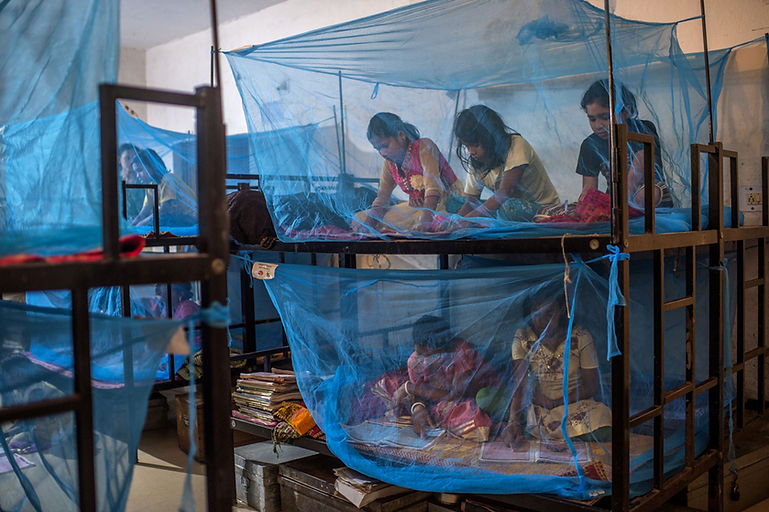

EPACHA.org

Environmental Protection Alliance and Center for Humanitarian Affairs Foundation
"REBUILDING OUR WORLD BLOCK-BY-BLOCK"
T h e P o r t a l s o f E P A C H A F o u n d a t i o n – P h a s e I I a r e O p e n :









World Malaria Day
April 25, 2019
Reminder: Nets are helpful . . . but a
cure for Malaria is long overdue!

United Nations - WHO 2019 Theme:
"Zero Malaria Starts with Me"










What is . . . Malaria?

Image Courtesy, Wikipedia - Mikael Häggström
MUST SEE VIDEO
Video Courtesy, Darby
Malaria is a mosquito-borne infectious disease of humans and other animals caused by protists (a type of microorganism) of the genus Plasmodium. The protists first infect the liver, then act as parasites within red blood cells, causing symptoms that typically include fever and headache, in severe cases progressing to coma or death. The disease is widespread in tropical and subtropical regions in a broad band around the equator, including much of Sub-Saharan Africa, Asia, and the Americas.
Five species of Plasmodium can infect and be transmitted by humans. Severe malaria is largely caused by P. falciparum while the disease caused by P. vivax, P. ovale, and P. malariae is generally a milder form that is rarely fatal. The zoonotic species P. knowlesi, prevalent in Southeast Asia, causes malaria in macaques but can also cause severe infections in humans. Malaria is prevalent in tropical regions because the significant amounts of rainfall, consistently high temperatures and high humidity, along with stagnant waters in which mosquito larvae readily mature, provide them with the environment they need for continuous breeding. Disease transmission can be reduced by preventing mosquito bites by distribution of mosquito nets and insect repellents, or with mosquito-control measures such as spraying insecticides and draining standing water.
The World Health Organization has estimated that in 2010, there were 216 million documented cases of malaria. Around 655,000 people died from the disease, many of whom were children under the age of five.[1] The actual number of deaths may be significantly higher, as precise statistics are unavailable in many rural areas, and many cases are undocumented. P. falciparum — responsible for the most severe form of malaria — causes the vast majority of deaths associated with the disease. Malaria is commonly associated with poverty, and can indeed be a cause of poverty and a major hindrance to economic development.
Despite a clear need, no vaccine offering a high level of protection currently exists. Efforts to develop one are ongoing. Several medications are available to prevent malaria in travelers to malaria-endemic countries (prophylaxis). A variety of antimalarial medications are available. Severe malaria is treated with intravenous or intramuscularquinine or, since the mid-2000s, the artemisinin derivative artesunate, which is superior to quinine in both children and adults and is given in combination with a second anti-malarial such as mefloquine. Resistance has developed to several antimalarial drugs, most notably chloroquine and artemisinin.
Above Definition Courtesy, Wikipedia The Free Encyclopedia
Learn more about Malaria on the following web page:









Nets are helpful . . .

but in the 21st Century . . .

more than nets . . .

Courtesy, https://www.sciencemag.org/news/2016/04/drug-resistance-triggers-war-wipe-out-malaria-mekong-region
. . . are needed!

A cure for Malaria . . .

should have already . . .

been discovered . . .

to save lives . . .

. . . long ago!

- EPACHA Foundation -
Learn more about
World Malaria Day
on the following web page:

Courtesy, UN - https://twitter.com/un/status/591815173503062016
EPACHA Foundation Extends
Sincere Thanks to
UNITED NATIONS

A n d
Including all herein who helped
make its . . .
"World Malaria Day 2019"
web page possible!
If you’ve missed the work of EPACHA in its Phase I duration, please be encouraged to click on the below web links.
Sincerest Thanks are Extended to http://archive.org/web/ for having made possible an archived viewing of
EPACHA Foundation’s entire volume of its Phase I web pages:

https://web.archive.org/web/20180321225044/http://www.epacha.org/Pages/Home_Page_BkUp3.aspx
Complete List of EPACHA - Phase I web pages:
A P R I L 2 0 1 9

